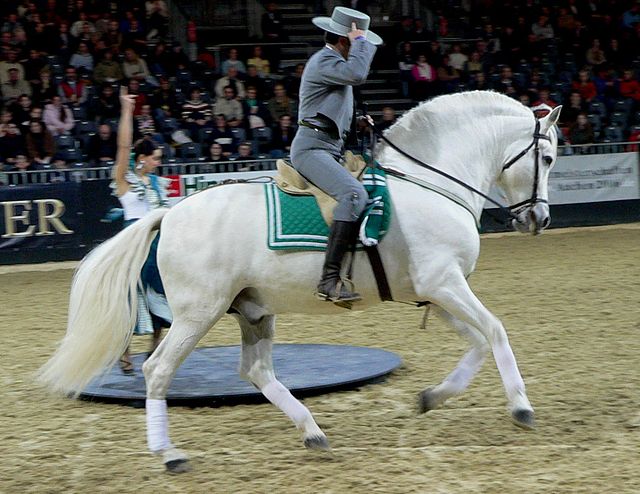The Peruvian Horse is a breed of light saddle horse known for its smooth ride. It is distinguished by a natural, four-beat, lateral gait called the paso llano. This breed is protected by the Peruvian government through Decree number 25919 of Peru enacted on November 28, 1992, and has been declared a Cultural Heritage of the Nation by the National Institute of Culture (INC). Due to the isolation suffered for about 400 years and the selection made by their breeders, this breed is very particular in their body proportions and an ambling gait or "paso llano" that is characteristic. It is typical of the northern Peruvian regions of the country from which it originated. Trujillo city is considered the cradle of typical Peruvian Horses.
A Peruvian Horse
A Peruvian Horse in traditional tack
The gaits of the Peruvian Horse are natural, as shown by this foal
A Peruvian Horse in motion
Horses can use various gaits during locomotion across solid ground, either naturally or as a result of specialized training by humans.
An 1878 chronophotography sequence by Eadweard Muybridge of a horse in motion
The trot, a two-beat gait involving diagonal pairs of legs. The two legs with white stockings are off the ground.
The Fairman Rogers Four-in-Hand (1879–80) by Thomas Eakins, was the first painting to demonstrate precisely how horses move based on systematic photographic analysis. Eakins based these on Eadweard Muybridge's 1878 photographs of the trotter "Abe Edgington".
An Andalusian performing the canter. The left hind and right fore will land at the same moment, creating three beats in the stride. This horse is on the left lead, as the left rear and right fore are moving together, with the left hind leading the right hind. As the left fore lands, it will be in front of the right fore.








